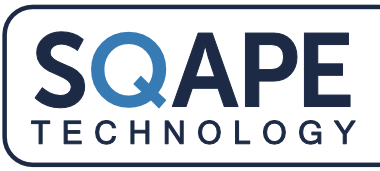Sustainable Unique
Constructional properties
Technical properties
As a cement substitute, SQAPE gives building materials not only durable, but also unique constructional properties.
SQAPE is currently used in non-structural (unreinforced) applications.
Practical trials at existing production sites show that SQAPE is eminently suitable for use in prefab concrete products such as:
Stones | Tiles | Grassland tiles | Tyres | Pavements | Cycle tracks
Stone
Tiles
Tiles
Grass paving
Grass paving
Tyres
Tyres
Road paving
Road paving
Cycle tracks
Cycle tracks
SQAPE Specifications
A unique combination of binder, alkali and the patented additive makes it possible to develop a customised building material that meets the specific requirements of your job.
| Compared to Portland cement | |
|---|---|
| Strength | High |
| Acid resistance | High |
| Chloride intrusion | Low |
| Shrinkage | Low |
| Efflorescence/ efflorescence | Low |
SQAPE properties
Compared to cementitious concrete, materials produced with the SQAPE technology have the following properties:
High mechanical strength (adapted to the requirements of the application)
High acid resistance (agricultural applications)
Low chloride intrusion
Very low (dehydration) shrinkage
Minimal (lime) efflorescence
Reusable
Freely applicable
Moreover, SQAPE technology can be used in conventional production processes of concrete, ceramics, stabilisation and immobilisation.
Features SQAPE
Moreover, the SQAPE technology can be used in conventional production processes of concrete, ceramics, stabilisation and immobilisation. The technology has been tested for years on our own laboratory scale. Investigations by independent bodies and universities are currently taking place.
Subscribe to RSS Feed on the news page and stay up to date.
SQAPE geopolymer is an innovative binder system. It is a sustainable alternative to cement in building materials, yet it is fully compatible with the traditional production method for concrete, for example. This makes building materials with SQAPE easy to produce in conventional concrete plants and factories.
The production process hardly differs. But essentially different is the better environmental performance of the materials produced. Compared to Portland cement, CO2 reductions of up to 80% can be achieved with SQAPE bound materials.
The excellent binding properties of SQAPE ensure high flexural and tensile strength. This was investigated in the application of precast elements, where Portland cement was completely replaced.
For example, the breaking load strength of a grass tile already after one day of curing meets the requirement of 62.5 N/mm² for heavy traffic loads. After 300 days of curing, this is no less than > 2x the limit value.
Acid resistance is important for the service life of the designed product. This is an issue in animal husbandry, for example, where animal faeces and acids in the feed affect the floors. This results in weight loss and loss of compressive strength of the material.
Studies show that SQAPE bonded specimens are more acid resistant than cementitious specimens of comparable strength (average weight reduction of 0.4 kg/m² versus 1.5 kg/m² after 14 days).
Download the full test report here
Until now, the processing of alkaline activated systems was difficult to control. By using the patented SQAPE additives, the system is stable and controllable. For example, the setting, flow and shaking rate increase with higher additive dosage and the open time is adjustable.
Download the full test report here
The service life of geopolymer-based concrete is an important issue.
At the request of SQAPE, TU Delft has carried out research into the service life of three of its mixtures: MI, MII and MIII. These alkali-activated mixtures were tested for resistance to sulphate attack, chloride penetration and carbonation.
The results show that MI has excellent resistance to the aggressive tests carried out by TU Delft. The performance of MI is comparable or even better than Portland cement and other alkali activated systems.
This demonstrates the long service life of MI and makes it ideally suited for use in civil engineering structures.
MII shows good resistance to carbonation and chloride penetration. MIII is characterised by a relatively high vulnerability, mainly to chloride penetration and carbonation.
For detailed information read here the TU Delft report - February 2016.
In a study carried out at the request of SQAPE, SGS INTRON also concluded that the SQAPE technology is suitable for the production of geopolymers with an extremely long lifetime.
The SQAPE technology makes it possible to formulate products with low drying shrinkage. This is particularly advantageous for road surfacing. Fewer dilatation joints are then required. Moreover, you can use SQAPE for cast floors in wet areas, for example.
In road surfacing, the drying shrinkage after 28 days is 0.15 - 0.20 mm/m. In screeds the drying shrinkage after 28 days is 0.05 - 0.1 mm/m. In other applications, the drying shrinkage is similar to that of cement-based products, around 0.6 mm/m. If less shrinkage is desired, recipe optimisation will show whether this is feasible. Download here the full test report
When SQAPE bonded materials (under-concrete) are combined with cementitious top layers, good adhesion is important for the quality of the final product. For example, with floors that consist of an underlay and a top layer. Such as cast floors that are applied on a layer of channel floor plates.
Research shows that the adhesion of SQAPE-bonded material to cementitious concrete is good. Both with wet geopolymer mortar on dry concrete and with wet on wet earth-moist mixtures. The average bonding strength in the study was > 2MPa. Download the full test report here
Building materials based on SQAPE technology are freely applicable. Thanks to their specific structure, their environmental impact is very limited. Due to the choice of binders used, they comply with the limit values of the Soil Quality Decree.
According to government policy, building materials are reused as much as possible after the usage phase (circularity). A condition is that the crushed material meets the limit values of the Soil Quality Decree regarding the release of contaminants (leaching). Download the full report here
Materials produced with SQAPE technology have been examined according to the regulations of the Soil Quality Decree. The measured leaching of metals, among others, remains within the emission limits of the Decree.

